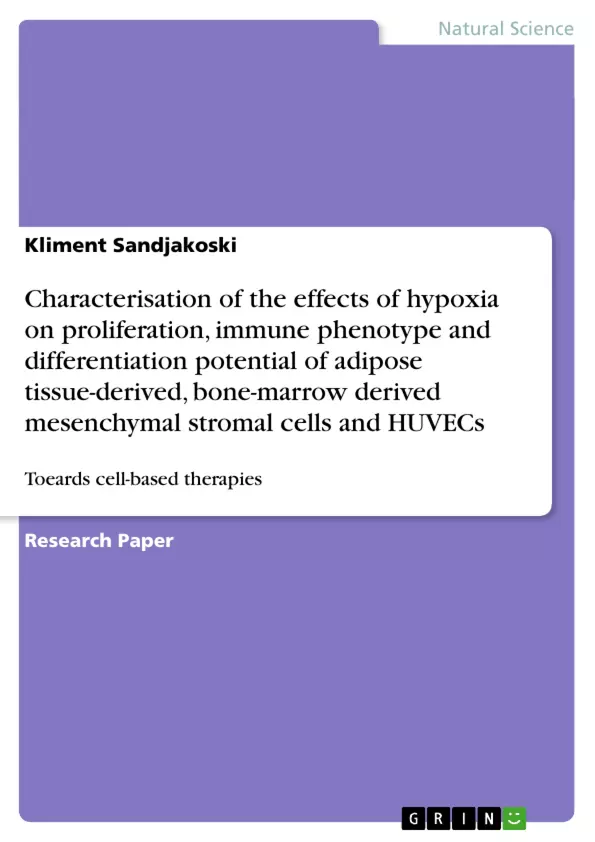Towards Cell-based therapies for diabetes: Characterisation
of the effects of hyperglycemia on proliferation, immune
phenotype and differentiation potential of adipose tissue-
derived mesenchymal stromal cells
Inhaltsverzeichnis (Table of Contents)
- Introduction
- Project Rationale
- Methods
- Isolation and expansion of MSCs
- Isolation and expansion of HUVECs
- Adipogenic differentiation of MSCs
- Oil red staining for adipogenesis assay
- Osteogenic differentiation of MSCs
- ODA staining for osteogenesis assay
- Immunofluorescence in HUVE cells
- Matrigel assay for HUVECs
- Experimental design
- Results
- Observation and data analysis for the Immunofluorescence in ADA and ODA MSCs
- TECAN measurement and analysis
- Control IF microscopy
- vWF in HUVECs
- FACS on HUVECs
- Aknowledgements
- References
Zielsetzung und Themenschwerpunkte (Objectives and Key Themes)
This project practical aims to evaluate the effects of varying glucose concentrations, medium changes, and oxygen partial pressure (ppO2) on the behavior of human umbilical vein endothelial cells (HUVECs) and endothelial colony forming cells (ECFCs) in vitro, as well as on mesenchymal stem cells (MSCs) derived from adipose tissue (LA) and bone marrow (BM).
- The influence of hyperglycemia on the proliferation, immune phenotype, and differentiation potential of MSCs.
- The role of hypoxia in regulating the behavior of HUVECs and ECFCs.
- The potential of MSCs for cell-based therapies for diabetes.
- The characterization of the effects of different culture conditions on the differentiation of MSCs into adipocytes and osteoblasts.
- The evaluation of the impact of hyperglycemia and hypoxia on the formation of tube-like structures by HUVECs in Matrigel assays.
Zusammenfassung der Kapitel (Chapter Summaries)
The introduction provides background information on human mesenchymal stem cells (MSCs) and their potential applications in regenerative medicine. The project rationale outlines the specific objectives of the study, focusing on the effects of glucose concentration, medium changes, and oxygen partial pressure on the behavior of different cell types.
The methods section details the procedures used for isolating and expanding MSCs, HUVECs, and ECFCs, as well as for conducting adipogenic and osteogenic differentiation assays. The experimental design explains the three culture conditions used to examine cell responses to hyperglycemia and hypoxia.
The results section presents observations and data analysis, highlighting the effects of different culture conditions on cell differentiation, proliferation, and tube formation. The results are analyzed using various techniques, including immunofluorescence microscopy, TECAN measurement, and flow cytometry (FACS).
Schlüsselwörter (Keywords)
This research focuses on mesenchymal stromal cells (MSCs), human umbilical vein endothelial cells (HUVECs), hyperglycemia, hypoxia, adipogenic differentiation, osteogenic differentiation, cell-based therapies, and tube formation assays.
- Arbeit zitieren
- Kliment Sandjakoski (Autor:in), 2014, Characterisation of the effects of hypoxia on proliferation, immune phenotype and differentiation potential of adipose tissue-derived, bone-marrow derived mesenchymal stromal cells and HUVECs, München, GRIN Verlag, https://www.hausarbeiten.de/document/286823


